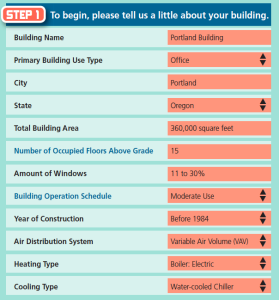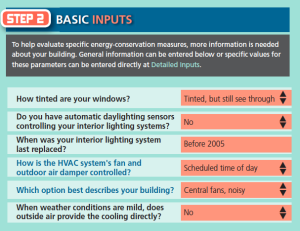
New Buildings Institute (NBI), a Portland, Ore.-based nonprofit organization working to improve the energy performance of commercial buildings, has released a beta version of a new web-based software tool that’s just right for filling this gap. The Retrofit Savings Estimator is a free resource that allows commercial building owners, managers, tenants and others interested in learning more about the energy performance of an existing building to evaluate the potential savings from a deep retrofit.
The tool is easy to use, simple to understand and highly customizable. A wide variety of building types can be examined, from offices to supermarkets to schools. Best of all, it’s free for building-sector and small-scale users, such as people evaluating individual buildings or property portfolios. (Efficiency managers interested in using this tool as part of a larger programmatic effort, such as a utility-scale program, should contact NBI.)
To get started, you’ll need some basic building data: total building area, building type, year of construction, and type of heating and cooling equipment. This information is entered primarily through drop-down menus; you don’t need to know numerical values or equipment specs. The intent is to utilize information that’s easily available to owners and managers. If you’re missing a particular piece of data, you can fall back on a customized default assumption. The engine behind this tool uses context-sensitive, field-verified algorithms developed during 20 years of modeling and consulting experience to extend your basic building inputs and create standard, non-proprietary DOE-2 energy models in real-time. Hundreds of custom building energy simulations examine the effect of the selected energy-saving measures individually and in groups.
The results allow you to investigate how much energy you could save by implementing promising groups of energy-savings measures. The tool identifies a set of the most impactful measures based on basic building characteristics and calculates potential energy savings associated with those upgrades. The tool also can predict how much energy you could save as a percent of current usage by implementing a custom set of building improvements. You can define a subset of the recommended measures to determine the impact of those choices. For example, in the sample report on page 2 for the iconic Portland Building, we’re looking at a package that includes HVAC distribution and lighting upgrades but excludes economizers, demand-controlled ventilation, daylighting and windows. You can see clearly an estimated amount of energy that could be saved by implementing selected measures or measure packages.

Ready to try it out? Visit the Retrofit Savings Estimator’s web page.

